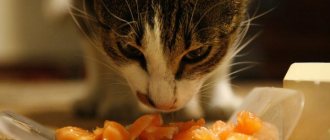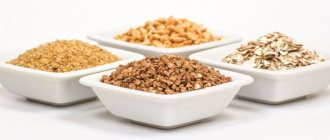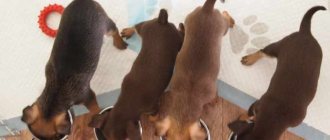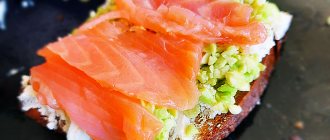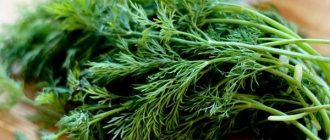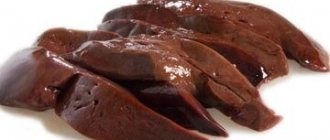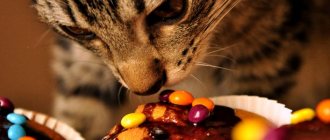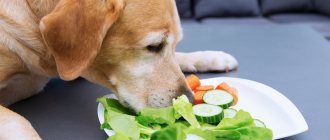A balanced diet has a beneficial effect on the human body, and the cat family is no exception. In order for a pet to be active and healthy, it needs natural products, which include meat products, fresh vegetables, cereals, and not leftover food from the table, as many cat owners are used to doing.
This list can also include dairy products, eggs, fish, which will allow you to form a more complete complex of minerals and vitamins.
Do cats eat buckwheat porridge?
Most cats happily eat buckwheat porridge both in its pure form and with additives. It is easily absorbed in the gastrointestinal tract, does not cause allergic reactions and serves as a source of useful substances.
Benefit
Due to its rich chemical composition, buckwheat is considered one of the most valuable types of cereals for cats:
- First of all, it contains a lot of plant fiber, which improves digestion and eliminates constipation.
- Even heat-treated cereals retain B vitamins. They have a beneficial effect on the functioning of the brain and cardiovascular system. In addition, the composition contains vitamins E and PP.
- Buckwheat contains a lot of organic fatty acids - oxalic, citric, malic. As well as microelements useful for the well-being of pets - cobalt, phosphorus, molybdenum, potassium, copper.
- With regular consumption of this cereal, the cat's body's need for iron is fully satisfied. It is necessary for the proper functioning of the circulatory and cardiovascular systems.
- Buckwheat contains a lot of iodine. This trace element is responsible for the health of the endocrine system, including the thyroid gland.
- The large amount of zinc in this cereal promotes good metabolism and improves the sense of smell and taste.
- Folic acid included in the composition improves immunity and increases endurance.
Harm
In most cases, supplementary feeding in the form of buckwheat does not cause any harm to cats. The exception is situations when animals have some severe health pathologies. For example, oncology and autoimmune diseases.
It is not recommended to feed such porridge to pets prone to allergic reactions. Therefore, before introducing buckwheat into your pet’s diet, it is advisable to consult a veterinarian.
After the first feeding, you need to monitor the cat for some time. If she has signs of an intestinal disorder or allergies, porridges made from this cereal should be abandoned.
Does it make you lose weight?
There is a widespread belief among some pet owners that their pets may lose weight if this cereal appears on the cat's menu. However, it is not.
People often use buckwheat in mono-diets to lose weight. But in addition to this product, your pet’s diet will contain complete animal proteins and vegetables, as well as specialized food. Your pet is not in danger of losing weight.
Content
1. Beneficial properties of buckwheat 2. Are there any restrictions on feeding 3. How much buckwheat does a cat need 4. How to prepare and give it correctly
In nature, hunting cats eat grains along with meat. Together with the caught bird or mouse, the grains of the cereals on which they ate enter the animal’s body. A complete diet when feeding natural food to domestic cats includes the introduction of cereals. Cereals supplement the cat's diet with vitamins and microelements. Therefore, it is advisable to introduce cereals into the diet of domestic cats, or rather, porridge made from them.
However, not all grains are good for cats. The list of prohibited foods includes barley, semolina, millet, peas, and corn. Cat nutrition experts categorically prohibit feeding them to their pets. These grains harm the health of animals and provoke various diseases.
How to cook?
To make buckwheat as beneficial as possible for your pet, it is important to choose and prepare it correctly. To feed your pets, you can take both the kernel and the chaff. But you cannot use instant porridge. They contain many foreign impurities.
Cereals can be cooked in water, milk, meat or fish broth . The main rule is that it is advisable to give milk porridge only to kittens up to about six months of age. Young animals absorb lactose from milk well. But with age, this ability is lost. And excess calcium can provoke urolithiasis.
For adults, cereals cooked in water or natural broths from fish and meat are more suitable. They shouldn't be too strong. Do not use salt or other spices, especially hot ones. When cooking fish broth, you need to make sure that there are no bones left in it after cooking. Therefore, it is better to strain the composition through a sieve.
The porridge should be boiled well. It should be semi-liquid so that the cat can eat it comfortably. To improve the taste, you can add a small amount of natural butter or odorless vegetable oil to the slightly cooled complementary food.
Meat and other additives
For flavor, you can add finely chopped or minced lean boiled meat or fish to the finished dish in a 1:3 ratio.
In addition, you can mix buckwheat with 1-2 tbsp. l. canned meat intended for cats. To increase nutritional value, experienced owners of these animals recommend mixing homogenized baby meat puree into the finished porridge. But in small quantities, since it may contain sugar, salt or other additives.
If possible, you can add boiled offal (heart, liver, kidneys) in boiled and crushed form to the cereal. They contain many useful substances, are nutritious and easily absorbed by the cat's body.
To diversify your diet, you can add boiled boneless fish to buckwheat. But canned food intended for human consumption is not suitable for this purpose.
Some experts advise adding hard-boiled eggs to the porridge - half for 1 serving. You can use both the white and the yolk separately.
Some cats like buckwheat mixed with herbs or vegetables. It is quickly absorbed and activates the gastrointestinal tract.
You should try several cooking options. And choose the one that your pet will like the most.
Secrets of a cat's diet
In order for your animal to be healthy and active, you must follow certain feeding rules. For example, under no circumstances should you mix dry food with natural food. If you feed your cat both natural and ready-made food, then make sure that the interval between feeding is at least six hours.
It is necessary to accustom an animal to cereal crops in infancy. If the reason for switching the animal to porridge was forced, pureed fish or meat and vegetables should be added to the prepared porridge to enrich the diet.
To summarize, we can safely say that buckwheat in a cat’s diet is a healthy product. The only thing is that when starting to feed your cat buckwheat porridge, you need to start with small portions. However, this recommendation applies not only to buckwheat, but also to any new complementary food for pets.
By strictly following all of the above nutritional recommendations, you can ensure your pet has a long and healthy life.
Source
How to give?
Veterinarians believe that it is optimal to feed a cat buckwheat 2-3 times a week. And give him a small portion that he can happily eat at one time.
The optimal menu is semi-liquid cereal mixed with any boiled meat in a 1:3 ratio. For example, in the morning you can give your pet 30 g of buckwheat and 100 g of meat, and in the evening - 40 g of boiled vegetables (pumpkin, carrots, zucchini) and 80 g of meat. You should focus on your pet’s body weight and its state of health.
It is recommended each time before feeding to prepare fresh porridge in the amount that the cat can eat at one time. If necessary, you can store leftovers in the refrigerator in a tightly sealed container. But before giving it to your pet, warm it to room temperature. The storage period should not exceed 3 days. Because the product loses its beneficial properties.
Kittens
To accustom your pet to buckwheat porridge, experts recommend starting to feed it to kittens from the age of about 1-1.5 months. To do this, you can give buckwheat, cooked in milk and well pureed.
To increase interest in new food, you can add ready-made canned food for cats to buckwheat - Royal Canin, Gourmet, Hills.
However, if such food is poorly digested by a kitten, it is better to refuse such complementary foods until it grows up.
How much buckwheat does a cat need?
If your cat is healthy, then feel free to add buckwheat porridge to its menu. However, when compiling it, you need to take into account that the cat is a predator, so you cannot feed it only cereals. An animal needs meat, grains, and vegetables. A plant-based menu with a lack of animal food can cause disturbances in the intestinal microflora, diseases of internal organs, obesity and a decrease in the body’s immune defense. Therefore, a balance of meat and grains is necessary.
The optimal ratio of buckwheat and meat in the diet is 1:3. The frequency of feeding a cat buckwheat porridge is no more than once every two days. As a percentage, cereals should make up no more than 20% of the pet’s total diet.
Several recipes
Chicken with rice and vegetables
- Boil 2 small carrots in a separate container and then grate them.
- Cook chicken thighs in a small saucepan. When the meat is boiled, you can add brown rice to the broth.
- While the rice is cooking, you can cut the chicken into small pieces.
- When the rice is cooked, let it cool slightly.
- Take one part of rice and mix with the same amount of chicken.
- Add some grated boiled carrots on top, now you can serve the dish.
Buckwheat porridge with stewed meat
- Buy a good stew at the store; it’s better to buy several cans at once, as some may not contain meat.
- Add a pinch of salt to the water, and after boiling, throw in the stew.
- When our broth boils, we can add buckwheat.
- The dish can be added only after it has cooled. We also recommend adding vegetables to the porridge; to do this, you can boil the beets in the microwave and then finely chop them.
Are there any feeding restrictions?
Despite its safety, not all cats are suitable for buckwheat. Before introducing a product into a cat's diet, it is necessary to take into account its health status. Only after positive recommendations from a veterinarian can you introduce porridge into the diet if your pet has the following diseases:
- oncological;
- autoimmune;
- tendency to allergic reactions.
It would not hurt to consult a specialist if the cat is old or young. It is known that some pets may have individual intolerance to the product, although buckwheat porridge is considered a hypoallergenic food.
If a cat, according to the veterinarian's indications, takes vitamins and microelements, then buckwheat should be excluded from the diet, since an excess of these substances can adversely affect the health of the animal.
Reviews
Alexander, veterinarian, Khabarovsk: “I think that buckwheat is one of the most useful for feeding domestic cats. This cereal contains enough vitamins and microelements to reliably provide a small pet with the substances necessary for normal life.
However, it is important to add animal protein to the cereal, without which complete nutrition for cats is impossible.”
Albina, specialist at a veterinary clinic, Chelyabinsk: “Buckwheat must be present in the diet of cats. It does not cause allergies and is quickly absorbed.
Cereals contain a lot of plant fiber, which is necessary for representatives of the cat family. It helps to effectively get rid of fur in the stomach, which they swallow when licking.”
Maxim, 56 years old, Vladivostok: “When we adopted a kitten for our grandchildren, during the examination at the clinic they advised us to give it liquid buckwheat porridge as complementary food.
At first I didn’t want to eat, even when they cooked the cereal in milk. But when he grew up, they began to cook buckwheat in meat broth and mix it with minced meat. Gradually our cat began to taste the treat. Now he never refuses this dish.”
Cat owners need to learn how to properly prepare buckwheat porridge and enrich it with animal proteins (meat or fish). However, before introducing such complementary foods into your cat’s diet, it is advisable to consult with a veterinary clinic specialist. Especially if the pet has any serious illness or is too young or old.
Source

